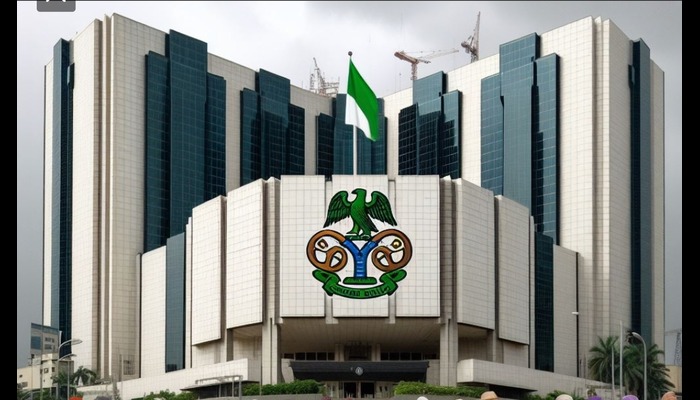1
LAGOS – Nigeria’s banking industry has continued on a cautious note as deposit money banks (DMBs) scaled back credit expansion amid the Central Bank of Nigeria’s (CBN) hawkish monetary stance and rising funding costs.
Experts said these has led to slower economic recovery due to reduction in available credit, higher borrowing costs, and a significant drop in spending and investment.
They said businesses are struggling to operate, leading to job cuts and rising unemployment, while consumers face reduced purchasing power, noting that these have slowed economic activity.
According to them, while Nigeria’s economy is experiencing positive growth, with forecasts for 2025/2026 at around 3.9% to 4.4% driven by services, it can still be described as experiencing slow activity from the perspective of the average citizen due to high inflation and the fact that growth isn’t reaching the majority of the population.
According to the apex bank’s latest Quarterly Statistical Bulletin, total credit to the economy declined marginally by 0.2 percent quarter-on-quarter (q/q) to N59.1 trillion in the first quarter of 2025 — the first quarterly contraction in recent periods.
The data reflect the impact of the CBN’s sustained tightening policy, which has pushed interest rates to multi-year highs in a bid to tame inflation and stabilise the naira. As lending margins narrow and risk costs rise, banks have adopted a conservative approach, prioritising asset quality over aggressive loan growth.
“This pullback in credit growth is a natural response to tighter liquidity and higher yields on risk-free instruments,” said an investment banker in Lagos. “With the CBN mopping up liquidity through its open market operations and standing deposit facilities, banks are earning more from placing funds with the apex bank than from taking lending risks in a weak economy.”
Despite the overall contraction, the oil and gas sector retained its position as the dominant recipient of bank credit. The sector accounted for 31.4 percent of total lending, equivalent to N18.6 trillion, representing an 8.2 percent q/q increase.
Analysts attribute this sustained growth to the energy sector’s capital-intensive nature and the ongoing restructuring of legacy exposures as global oil prices remain relatively stable.
“The energy sector continues to attract financing because of its perceived strategic importance and relatively secured cash flows,” explained a Lagos-based credit analyst.
“Banks are also supporting downstream players and new entrants in gas processing and distribution, which align with Nigeria’s energy transition goals.”
The finance and insurance sector emerged as the second-largest recipient, absorbing 14.2 percent of total credit as disbursements grew 8 percent q/q. The expansion reflects banks’ growing appetite for non-real sector exposures — particularly investments in financial institutions and capital market-related instruments.
According to analysts, this trend underscores banks’ preference for safer, short-term and higher-yielding assets, especially in an environment where loan defaults in the real sector are rising.
“Banks are essentially reallocating risk. Lending to finance and insurance-related entities offers better returns without the complexities of managing manufacturing or trade-related credit risks,” said another analyst.
The manufacturing sector, traditionally a key engine of credit growth, ranked third with a 13.1 percent share of total lending, but credit to the sector fell 9 percent q/q. The decline mirrors the tough operating environment confronting manufacturers — from foreign exchange volatility and high energy costs to weaker consumer demand.
Manufacturers, already burdened by imported inflation and high logistics costs, are struggling to meet repayment obligations, prompting banks to reassess exposures.
Many have shifted focus toward more resilient sub-sectors such as food processing and packaging, while cutting back on heavy industries and import-dependent segments.
“Manufacturing is no longer a haven for lenders,” a senior risk manager at a Tier-1 bank noted. “We are now more selective, preferring clients with stable cash flows or export potential.”
The CBN Bulletin also showed sharp declines in credit to general services (-18%) and trade/general commerce (-18.8%). Analysts link the declines to weak working capital demand, stricter lending standards, and higher borrowing costs that have eroded the profitability of small and medium enterprises (SMEs).
These two sectors, which together represent a significant portion of Nigeria’s employment base, are among the hardest hit by elevated interest rates. Many SMEs have resorted to alternative financing — such as supplier credit or fintech lending platforms — though these often come with higher effective costs.
In his contribution, Stephen Iloba, an economist, said, “The commercial sector is feeling the pinch of liquidity constraints. Reduced inventory financing and slow consumer spending are weighing heavily on trade credit growth.”
In contrast, credit to the agriculture sector grew 11 percent q/q to N3.2 trillion, buoyed by targeted lending under government-backed schemes and renewed interest in agro-processing ventures. However, the sector’s share of total credit remained low at 5.4 percent, despite contributing 26.2 percent to GDP in Q2 2025.
Analysts say the mismatch between agriculture’s economic importance and its access to formal financing reflects structural weaknesses — from inadequate collateral frameworks to weather and price risks that deter banks.
“Agriculture remains underbanked,” noted a development finance expert. “Without risk-sharing mechanisms and better insurance cover, banks will continue to allocate a disproportionately low share of credit to the sector.”
The report also showed that credit to the government increased 5.7 percent q/q to N3.1 trillion (a 5.2% share), highlighting the public sector’s sustained demand for short-term funding to plug fiscal gaps. Similarly, loans to the ICT sector grew 9 percent to N2.1 trillion, reflecting rising investments in digital infrastructure, broadband expansion, and fintech growth.
“The ICT space remains a bright spot,” said a digital economy analyst. “Banks are financing data centre projects, network upgrades, and fintech innovations that support payment digitisation — all of which have long-term growth potential.”
Credit to the construction sector was largely flat at N2.4 trillion (+0.1% q/q), consistent with the slow pace of capital projects and private real estate developments amid elevated material costs and subdued consumer demand. Meanwhile, the ‘Others’ category of loans fell 2.2 percent to N5.4 trillion, completing the picture of broad-based caution in lending activity.
Overall, the data affirm that Nigeria’s high-interest-rate environment and tight liquidity are constraining loan expansion. The CBN’s benchmark Monetary Policy Rate (MPR) — maintained at an elevated level through most of 2025 — has significantly raised borrowing costs, discouraging both banks and borrowers.
“The risk-adjusted return on government securities now rivals what banks can earn from loans,” said a treasury dealer at one of the top-five lenders.
“In this context, holding cash or investing in CBN instruments becomes more attractive than lending to riskier clients,” the dealer added.








